2021 Fox 38 Factory Fork
Test Location: Montana
Test Duration: ~3 months
Stanchions: 38 mm
Travel Options: 160, 170, 180 mm
Wheel Sizes: 27.5” & 29”
Version tested: Factory Trim, 29”, 44 mm offset, 170 mm travel
Blister’s Measured Weight: 2417g (cut steerer)
MSRP: $1199 as tested
Bolted to: Specialized Enduro
Reviewer: 5’9”, 155 lbs
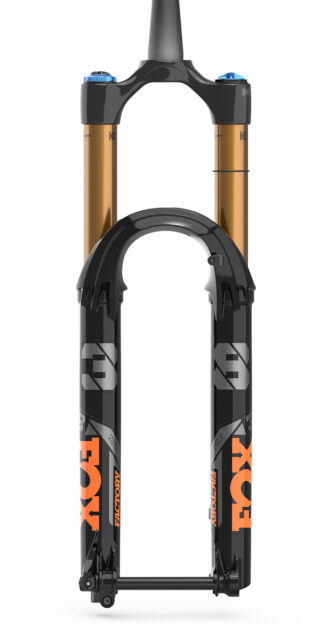
Intro
2020 is the year of a lot of things, most of which I’d be pretty happy to forget. But 2020 also brought us a faint glimmer of goodness amongst the steaming pile of news — pretty much everyone released an oversized, single-crown fork. And by everyone, I mean RockShox, Manitou, and the topic of this little piece of prose, Fox.
The Fox 38 is the biggest single-crown fork Fox has ever made, with its 38 mm stanchions slotting it in between the Fox 36 and their dual-crown 40. With a minimum of 160 mm travel (and a max of 180 mm), it’s mostly going to be found on longer-travel Enduro sleds.
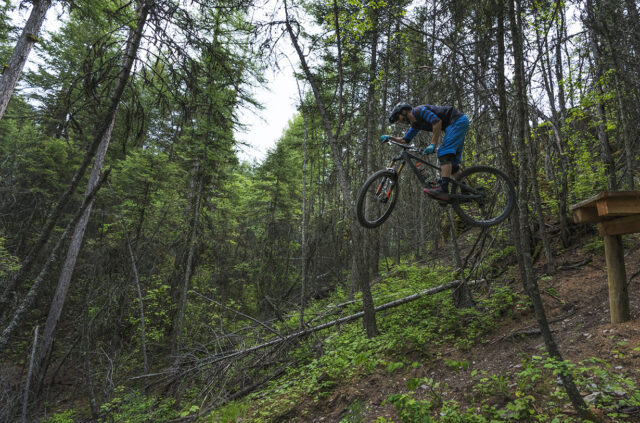
The 38 is stiffer (38% torsionally stiffer and 17% stiffer fore-aft vs. a 36, according to Fox) and heavier (2417 g on my scale, compared to ~2100 g for an equivalent 36), which is to be expected for something that’s about the closest thing to a single-crown downhill fork.
So, by the numbers, the 38 is a big, burly, stiff fork. But the question is: does that actually translate to something that’s better on the trail?
I spent a few months switching back and forth between the 38, a Rockshox Lyrik, and a Fox 36, so here’s my take.
Options & Features
As with most of the forks in Fox’s lineup, the 38 is available in three flavors — Factory, Performance Elite, and Performance.
The top-of-the-line Factory trim has Kashima-coated legs, Fox’s new, 2021 Grip2 Damper, Float Evol air spring, lower-leg bleed ports, and an assortment of color options.
The Performance Elite version has the same internals as the Factory forks, but without Kashima-coated legs, only a matte-black color option, and fewer travel and rake options.
Performance-level forks bump down to Fox’s less adjustable, lower-end Grip damper and lose the lower-leg bleed ports.
All of the 38 forks feature Fox’s new “floating axle,” which uses a floating spacer on the right side of the fork that’s secured with a pinch bolt. That system accommodates for slight variations in hub width. E.g., if your hub is slightly narrower than spec, when you tighten down your axle, it would pinch the forks legs in a small amount, which makes the fork’s bushings bind up a bit and slide less smoothly. The floating axle accounts for that, and ensures that the fork legs stay straight and aligned, regardless of your hub.
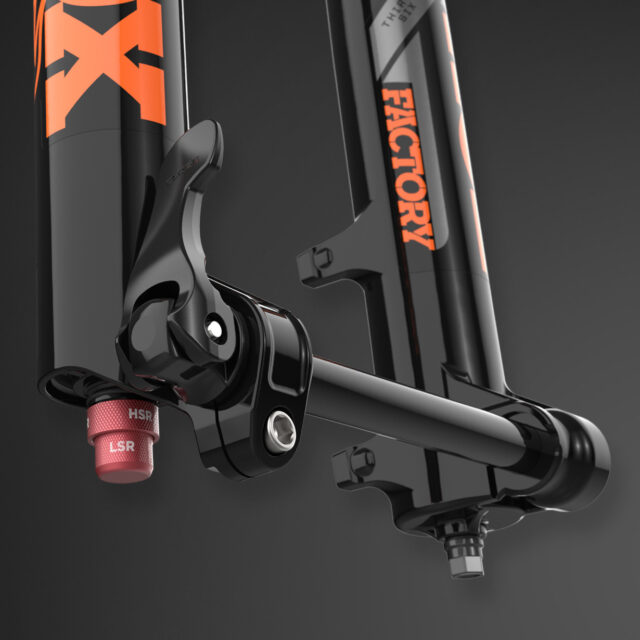
All 38’s also have lower-leg channels and the ability to run bleeder ports (which are included on Factory and Performance Elite models, and can be added on Performance models). On any fork, there’s a fixed amount of air trapped in the lower leg of the fork. As the fork compresses, that air gets compressed. Particularly for lighter riders who are running low pressures in the main air chamber, that compressed air in the lower legs can actually make it hard to use the fork’s full travel. The lower leg channels help that air vent up past the bushings as the fork compresses, minimizing the pressure increase in the lower leg. And the bleeder valves allow for pressure buildup in the lower legs to be bled off. All of that just helps keep the fork running smoothly and it makes precise setup a little easier.
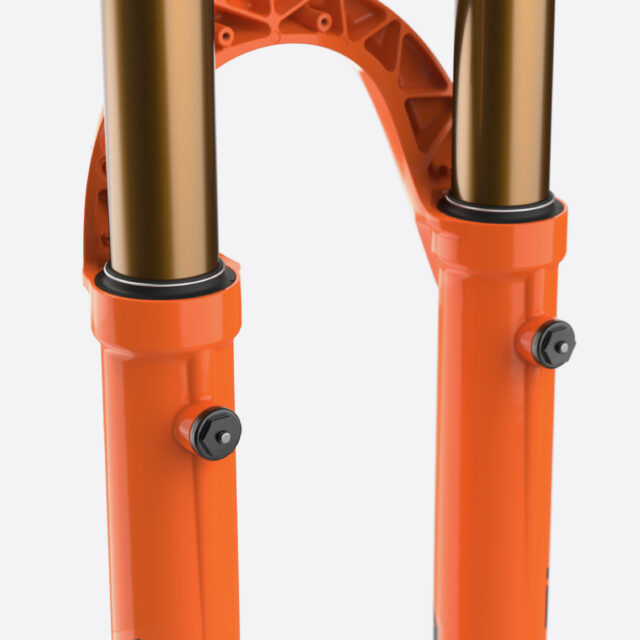
The 38 also gets an elliptical steerer tube that’s designed to help distribute stress better around the steerer / crown junction. And the lower-leg arch is designed with extra clearance for the meaty headtubes that we’re seeing on a lot of bikes these days. As a side note, that redesigned arch means that zip-tied fenders (e.g. Marsh Guards) don’t really fit anymore. Fox does, however, make a bolt-on fender that I used, and it works nicely.
The 38 also gets a slightly different air spring than any of the other Fox forks. Rather than the left leg simply acting as an air chamber, there’s actually an internal tube (that’s the same size as a Fox 34) that houses the air spring. By running a “tube within a tube” setup, Fox was able to keep the air spring linear, but still with some ramp-up at the end of the travel. Part of the difficulty with the larger-diameter stanchions is that it makes the air chamber bigger as well, and apparently, Fox ran into difficulty creating a negative air chamber that adequately matched the large positive air chamber. By going to the tube within a tube setup, they were able to get the spring curve they wanted and an appropriately sized (but still quite large) negative air chamber. Plus, there’s the additional benefit of smaller seals within the smaller tube, which means less friction. That inner tube is also able to float within the fork, so it doesn’t bind up as the fork flexes.
The 2021 Grip2 Damper
Despite being a whole new fork, the 38 still uses Fox’s Grip2 damper. Except the Grip2 damper is heavily revised for 2021 (the new version is also found in the 2021 34, 36, and 40).
But rather than trying to hack my way through an explanation of the changes (most notably the new “VVC” variable valve control system), here’s Fox’s Jordi Cortes explaining it:
On the Trail
So the 38 is a new fork, with a bunch of new tech and fancy widgets crammed into it. But by all (or at least most) accounts, the 36 is already a great fork — I can’t say I’ve ever ridden a 36 (or a RockShox Lyrik) and come away thinking that they’re just too damn flexy. So does the 38 make a noticeable difference? Is it actually better?
I can say this in no uncertain terms: yes. It is noticeable. It is better.
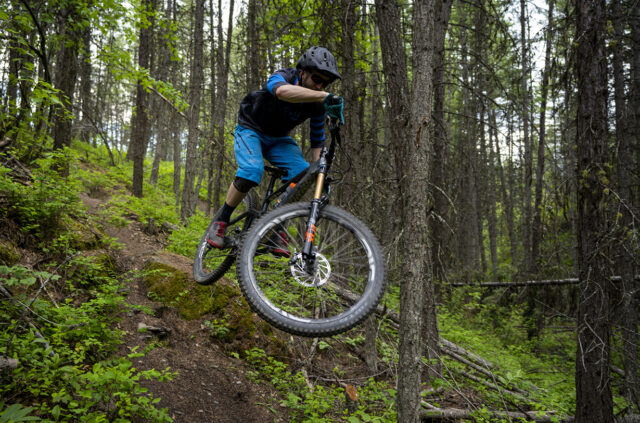
On my Specialized Enduro, I’ve switched back and forth between the 38 and a Lyrik Ultimate. Both with 170 mm of travel. Both with the same 44 mm offset. And the Lyrik is a great fork — I’ve run various Lyriks on a few different bikes, and I like that fork a lot. I’d call it roughly comparable to a Fox 36, which I’ve also spent a lot of time on, and I also find to be a great fork in pretty much every situation I’ve thrown at it.
But mounting up the 38, the difference was noticeable in the very first corner. It tracks better. It stays smoother through chunk. Put very simply, it absorbs bumps better.
The easiest place to notice the difference is in rocky, rough, generally shitty corners. Places where you want your front wheel to track very precisely, but where there are a lot of things that are trying to knock your front wheel off line. The bike is leaned over and you’re running into stuff, so there are forces pushing on the fork in a bunch of different directions.

In that situation, the extra stiffness of the 38 is not subtle; it pretty clearly tracks better. And presumably because the fork is flexing less, the suspension also stays smoother because the bushings bind up less, so it tracks through the bumps more competently, which just compounds the feeling of effortlessly arcing through a rough corner.
There’s one specific corner on the trails that I ride most that’s particularly rocky, and it’s in a place where carrying speed matters. The smooth line is on the inside, but that makes the corner really tight. The fast line is on the outside, using a pile of chunky rocks as a makeshift berm. With the Lyrik mounted up, the outside line worked for me about 50% of the time; the rest of the time I’d get bounced off line and something non-optimal would happen. With the 38 mounted up, that chunky outside line didn’t even feel chunky anymore. It felt like cheating.
The difference between the 38 and Lyrik / 36 is pretty noticeable through brake jack too. In a straight line where I’m hard on the brakes before a corner, hammering through the kind of bomb holes that show up on minimally maintained bike park trails in August when it hasn’t rained in a month, the front end just stays more composed with the 38. The holes don’t disappear, but the fork also doesn’t feel like it’s getting worked over and the bushings are binding up. This isn’t quite as noticeable as the cornering differences, and it’s still not as smooth as a double-crown fork, but the improvement over a 36 / Lyrik is definitely there.

So, the 38 is stiffer, that much is clear. Fox quantifies the extra stiffness in terms of percentages, but I don’t find those numbers to be all that useful. How I’d describe it is this: the 38 is stiffer than a 36 in the same way that a 36 is stiffer than a 34. That’s pretty logical, but personally, I was a little surprised that the difference was actually so noticeable.
To put it another way, the 38 is the first single-crown fork I’ve ridden that actually comes close to feeling competent on real downhill trails. Lots of people say that their Enduro bikes descend just as well as a full-on downhill bike, to which I say: no, they don’t. Enduro bikes descend really well, and on smoother tracks, they might even be faster than a DH bike. But when things get legitimately rough, there’s a reason DH bikes still exist. And a lot of that gap in performance comes from the front end — it’s tough to match the stiffness (and travel) of something like a Fox 40. The 38 doesn’t get all the way there, but it certainly closes the gap.
So is it ever too stiff? In my opinion, no. I can make an argument that the 40 is, in certain circumstances, too stiff, at least for me (a little bit of flex can help the wheel wiggle through chunder where a stiffer fork might deflect). But I have no such reservations about the 38. In my time on it, I was happy to have the stiffness in every situation I encountered.
Ok, that’s more words about stiffness than you’ll find in the pornhub comments section. But how about the rest of the fork?
The 38’s floating axle setup is slick. I’m not sure I notice a huge difference, but I think that’s the point. The lower-leg bleeder ports work; I do a long descent, I push the button, air comes out. It does not make the fork feel substantially different, at least to me.
The tube-within-a-tube air spring feels very smooth, and I was pretty content with the 2 volume spacers that came stock in the fork (although adding / removing spacers is quick and easy — same as other Fox forks). The 38 feels a little more supple in the early part of the stroke than past 36’s I’ve been on, meaning that it maybe uses a little more of its travel, a little more regularly. Maybe this is because the fork is just running smoother, or maybe it’s due to differences in the air spring. Either way, I like it — the fork swallows small bumps but never feels unsupportive.
As with many of the Fox forks, I find the 38 to be fairly sensitive to small air pressure adjustments. 2-3 psi makes a fairly noticeable difference in how the fork rides.
The 38’s Grip2 damper adjustments are, at a glance, similar to prior versions of the Grip2; high- and low-speed compression adjustments at the top of the right leg, high- and low-speed rebound adjustments at the bottom of the right leg.

I find the new VVC dampers to be extremely smooth. It’s much harder (maybe impossible) to find a setting that really feels bad or harsh. The rebound adjustments work as intended, and it’s pretty easy to get the fork set so that it recovers quickly from impacts without feeling pogo-y or uncontrolled.
The low-speed compression adjustment is similar to prior generations of Grip2 dampers, and I find it to work well. You can dial in the support in the front end, but it never feels like you’re dramatically sacrificing small-bump sensitivity.
The high-speed compression adjustment is perhaps my one quibble — while the VVC valve certainly makes for a smooth feel, I don’t find the adjustment to make quite as much of a difference as the prior version of the Grip2 damper. Going from fully open to fully closed on the new Grip2’s high-speed compression does make a noticeable difference, but it’s more of a fine-tuning than a substantial change in how the fork handles big impacts. So tuning for big hits requires a little more work on the air spring side.
Comparisons
The obvious comparisons here are the RockShox ZEB and the Manitou Mezzer Pro, neither of which I personally have time on yet. However, Blister’s David Golay has been putting time on the ZEB and Mezzer, and as I write this, we’re in the process of swapping forks. So we will be doing a more in-depth comparison of these three, burly, single-crown forks in the future. For now, here’s how the 38 stacks up against two other very popular forks:
Compared to the Fox 36.
As I mentioned above, the 38 is very clearly stiffer in every way. It tracks better, and it runs smoother through bumps. The 38 also weighs around 300 g more, so there’s that. Purely in terms of ride quality, I’d say the air spring in the 36 feels a little more supportive, but they can almost certainly be tuned to feel very similar.
Compared to the RockShox Lyrik.
I’d argue that the Lyrik is a smidge stiffer than the 36, but the 38 is still very noticeably stiffer than the Lyrik. And like with the 36, the 38 weighs around 300 g more than the Lyrik. I would say the Lyrik feels a little more supple in its early stroke than the 36, but a little less supportive. But the 38 manages to feel both more supple than the Lyrik and at least as supportive, if not a bit more supportive.
Durability / Issues
Here’s where this review gets interesting. After about a month on the 38, it started to creak. And not just a little creak. A horrendous, “I hope nothing fails catastrophically” kind of creak. The noise was clearly coming from somewhere in the area of the crown, but I could never tell with certainty whether it was coming from the leg / crown junction, or the steerer / crown junction (although I’m 90% sure it was the latter).
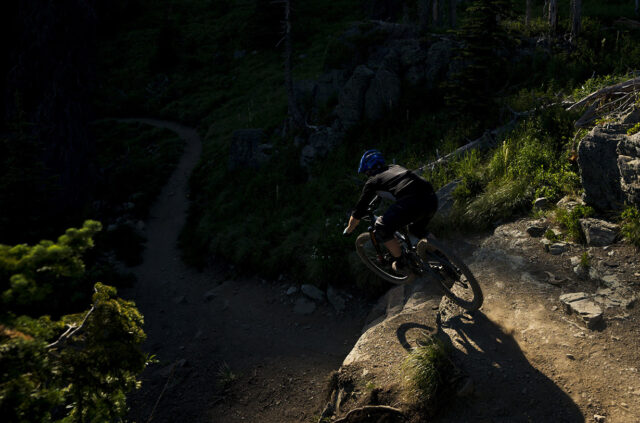
The fork went back to Fox, they pressed on a new crown / steerer assembly, and sent it back to me. Since then, despite some hucks to flat, poor line choices, and big impacts, the fork has been silent. But we will be paying close attention to that going forward, and will be provide an update further down the line.
Bottom Line
Sigh. The Fox 38 is so damn good. Except for when it wasn’t.
I love how it rides. Sure, it’s heavy — if I’m building a trail bike where weight is even a nominal consideration, I’d be looking at the still-very-good 36. But if I’m building a longer-travel bike that’s intended to limp it’s way to the top and lay waste to any downhill, the 38 rides better than any single-crown fork I’ve been on to date.
But then it started creaking. And, anecdotally, my creaky 38 was not an outlier — I know a few others who have had similar issues. Which, I suppose, isn’t that surprising; it’s a big, stiff fork and that crown / steerer junction undergoes a whole lot of stress. The question, at this point, is whether Fox can prevent it from being an ongoing issue in the future.
So I’m not entirely sure where that leaves this review. If I didn’t love how the 38 rode, I’d have an easier time just writing it off. But I do love it. And it’s been quiet since Fox sent it back to me, so maybe mine (and some others) were just part of a bad batch where the elliptical steerer wasn’t quite to spec? It’s tough to say right now. But I sure hope that our further time on the 38 proves that Fox has sorted out this issue, because almost everything else about the fork is a winner.

Good review. I passed on it due to the limited low travel options and the reported creaking. I actually bought a 2020 36 model also due to the lack of damper adjustment reported in the 2021 models. I’m 260lbs, so I really wanted the 38, but it’s just not done right yet. Give me a creak free model with 140mm travel and 51mm offset and we’re a go.
It seems like a 35/36mm dual crown could be made to hit the same system weight by running bearing races integrated into the crowns, a tension bolt only no steerer and a light direct mount stem and would be better all around.
I know this review was posted a while ago, but if possible could you share the psi/rebound/compression settings used while testing? I am the same weight and ride a bike with similar gel but have not been able to get this feel from the 38. Any response is greatly appreciated
Very happy about my 38 on my RM Instinct BC Powerplay eMtb. Over feeling is closer to a DH bike with a 40 fork then anything else. So plush and responsive I’ve gone for a change of airspring to get full 180 travel instead of doing it by converting it to coil spring
However I now have an issue with the fork topping out harshly metal to metal instead of against a rubber bumper it seems.
Any ideas what can be causing this? Ive followed the instructions closely. Could the new 180 airspring be missing an internal rubber bumper? Or is there any other known issues with this?
If the bumper is missing, the fork would ride substantially higher, since the topout position would have changed substantially. Measure the exposed stanchion, it should be about 185-190mm for 180mm travel.
The more likely reason is that there’s just a bit too much grease on the air piston, and it’s blocking the dimple that equalizes positive and negative pressure at topout. Without adequate negative pressure you’ll get an appreciable topout clunk.